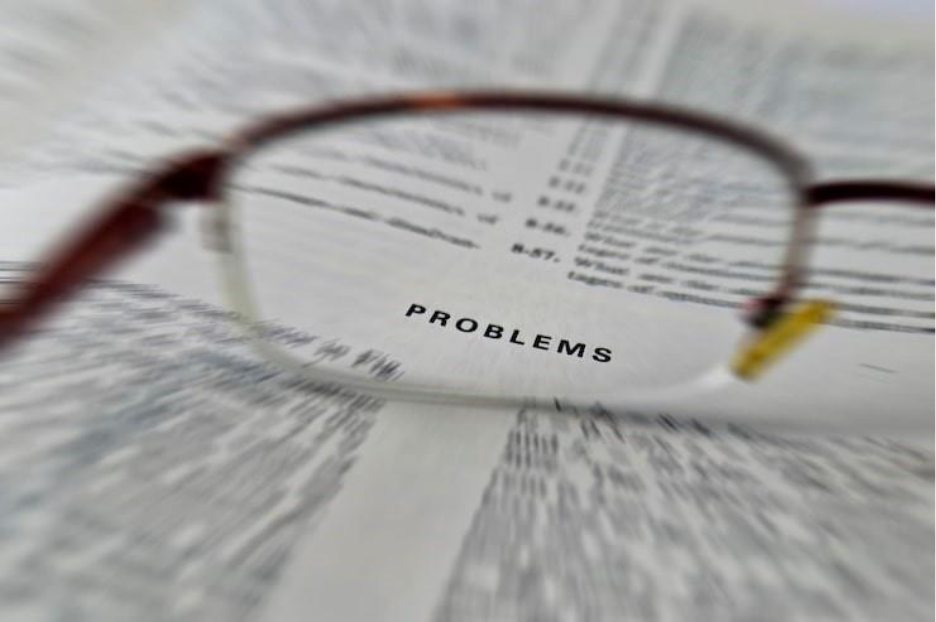
In 2025, investor expectations for corporate transparency, financial accuracy, and regulatory compliance have never been higher—yet crucial due diligence red flags still slip through even the most advanced risk review frameworks. Whether you’re a private equity partner, venture capital analyst, or corporate compliance officer, one overlooked red flag can mean the difference between a profitable deal and a multimillion-dollar loss.
The due diligence process has evolved beyond paper checklists and static reports. Today’s complex, globalized markets demand predictive due diligence—a combination of artificial intelligence, real-time monitoring, and human expertise that exposes risk signals early. However, despite the rise of automation, many investors still underestimate hidden liabilities in financials, litigation exposure, beneficial ownership, and governance structures.
Understanding due diligence meaning in business is not just about meeting regulatory obligations—it’s about protecting your capital, reputation, and long-term strategy. As a leader in predictive risk intelligence, BusinessScreen.com enables investors to detect these blind spots early through AI-powered screening, continuous monitoring, and comprehensive due diligence sample reports that transform complex data into actionable insights.
Due diligence red flags are indicators that a target company may be concealing financial instability, operational weaknesses, or compliance violations. They can appear in financial statements, court filings, corporate registrations, or leadership backgrounds.
These red flags don’t always signal fraud—but ignoring them can expose investors to serious risk. A single unverified beneficial owner, undisclosed lawsuit, or missing compliance license can derail mergers, attract fines, or trigger post-deal disputes.
Predictive and AI-powered due diligence helps uncover these issues earlier, but human analysis remains critical. Technology accelerates discovery, but trained investigators interpret the meaning behind data. That’s why BusinessScreen.com combines machine learning with human intelligence, ensuring no red flag is left unnoticed.
One of the most common due diligence red flags is inconsistent reporting between management-prepared accounts and audited financial statements. Unexplained cash-flow gaps, unusual expense patterns, or aggressive revenue recognition often mask liquidity problems. Cross-checking trends over multiple years is essential.
Investors should integrate financial due diligence and forensic accounting reviews as part of every deal, using BusinessScreen.com’s due diligence checklist for step-by-step validation.
Unresolved lawsuits, expired licenses, or ongoing investigations often remain undisclosed until after closing. Investors frequently miss these risks by relying solely on self-reported information. Using continuous monitoring and record retrieval tools like how to find civil case records can uncover litigation or compliance breaches that aren’t visible in standard reports.
Opaque ownership structures hide true control, potential sanctions exposure, or politically exposed persons (PEPs). Validate all beneficial owners using business verification and UCC filing searches to ensure transparency. Failing to confirm beneficial ownership is one of the top AML red flags in enhanced due diligence (EDD).
A company that depends heavily on one or two major clients or suppliers faces significant operational risk. If 40% of revenue or sourcing relies on a single partner, the entire valuation may be at risk. During investment due diligence, confirm revenue diversification and assess contingency plans for client loss.
For technology-driven companies, aging systems and unprotected IP are major hidden liabilities. Weak licensing documentation or unclear ownership rights can complicate post-acquisition integration. Independent IT and patent audits should form part of every commercial due diligence engagement.
Unexplained capital infusions, offshore loans, or unusual shareholder funding patterns can signal potential money laundering. Perform enhanced due diligence on funding origins and counterparties, using AML and sanctions lists such as OFAC and FATF. BusinessScreen.com integrates these screenings automatically.
Pending lawsuits, especially involving company executives or affiliates, can destroy post-deal value. Predictive due diligence tools cross-check state and federal court filings to detect these early. BusinessScreen.com’s global monitoring alerts investors in real time to any new litigation developments or regulatory actions.
Leadership history often reveals more about future performance than financials. Past bankruptcies, fraud charges, or ethics violations should raise immediate caution. Executive background checks and officer verification are core components of comprehensive corporate due diligence.
Failure to comply with GAAP, AML, or environmental standards is a serious red flag. Regulatory fines and operational shutdowns often follow non-compliance. Incorporate compliance due diligence reviews that include license validation, internal policy evaluation, and audit record analysis. BusinessScreen.com provides pre-acquisition verification tools that identify compliance weaknesses before closing.
When documentation is incomplete, inconsistent, or missing entirely, it’s nearly impossible to validate representations. Missing contracts, outdated filings, or absent board minutes can signal disorganization—or intentional concealment.
AI-powered predictive due diligence software from BusinessScreen.com automatically identifies missing or mismatched data points, enabling faster and more reliable validation.
Failing to detect these red flags during the due diligence process can lead to disastrous financial and reputational consequences. According to Deloitte, more than 70% of failed mergers and acquisitions trace back to insufficient due diligence or poor post-deal integration.
The consequences include inflated valuations, unforeseen liabilities, and lost investor confidence. Missed legal issues or compliance gaps can result in SEC investigations or sanctions, while hidden financial irregularities often require costly restatements.
In 2025, due diligence also extends beyond financial risk. ESG compliance, cybersecurity resilience, and supply chain transparency are now standard components of enhanced due diligence. Investors must adopt predictive tools capable of monitoring these evolving dimensions continuously. BusinessScreen.com’s predictive due diligence framework automates these processes—spotting patterns before they escalate into losses.

Traditional due diligence relied heavily on manual data collection, fragmented systems, and human review. Today, AI-driven due diligence software integrates all these functions into a unified, real-time platform.
BusinessScreen.com uses predictive modeling to scan corporate filings, sanctions databases, financial statements, and international registries simultaneously. The platform analyzes thousands of risk signals and generates comprehensive due diligence reports within minutes—helping investors verify financial data, trace beneficial ownership, and assess leadership credibility faster than ever before.
This predictive system identifies anomalies invisible to traditional methods, from subtle financial inconsistencies to shell company networks. Continuous background screening ensures risks remain visible long after an investment closes. According to Gartner and McKinsey, firms adopting AI-based due diligence reduce overall compliance costs by up to 40% while improving accuracy and auditability.
When paired with human review, predictive due diligence transforms risk management from reactive to proactive. BusinessScreen.com’s proprietary data analytics, multilingual coverage, and human investigator oversight make it the ideal platform for investors conducting cross-border due diligence, M&A assessments, or high-value transactions.
Avoiding hidden risks requires discipline, standardization, and constant vigilance. Investors who follow these best practices maintain a competitive advantage and regulatory protection.
First, build every due diligence checklist around data integrity. Verify that every claim in financial statements and filings can be independently corroborated.
Second, adopt continuous monitoring—a best practice that keeps investors informed of ongoing risks even after closing.
Third, integrate global compliance sources. OFAC, FATF, FinCEN, and SEC databases provide cross-referenced insights that strengthen compliance due diligence outcomes.
Fourth, involve third-party specialists. Using an external provider like BusinessScreen.com ensures unbiased data collection and validation.
Finally, document every step. In 2025’s regulatory climate, auditable due diligence trails are essential to defend investment decisions.

Red flags rarely announce themselves—they hide in footnotes, filings, and fragmented data. In today’s high-speed investment world, identifying them requires both automation and expertise. Investors who embrace predictive due diligence, continuous monitoring, and AI-enhanced screening will outpace those relying solely on manual review.
BusinessScreen.com empowers global investors with the technology, data, and human intelligence needed to catch every warning sign before it becomes a problem. From financial due diligence to third-party risk management, their end-to-end solutions provide clarity and confidence in every deal.
Begin your journey with BusinessScreen.com today. Download The Ultimate Due Diligence Checklist and discover how predictive due diligence transforms your investment process from reactive defense to proactive advantage.
In 2025 and beyond, missing red flags isn’t just a mistake—it’s a choice. With BusinessScreen.com, investors never have to make it.
What are the most common red flags in due diligence?
Inconsistent financials, hidden legal issues, undisclosed ownership, weak compliance, and leadership integrity problems are the most common warning signs uncovered through modern investment due diligence.
What does due diligence mean for investors?
For investors, due diligence means verifying every aspect of a company’s financial, operational, and regulatory background before committing capital. It includes financial analysis, legal record review, and enhanced due diligence (EDD) for high-risk transactions.
How can predictive due diligence help detect hidden risks?
Predictive due diligence uses AI and continuous monitoring to surface anomalies, ownership links, and financial irregularities invisible to manual checks—helping investors act faster and safer.
What is enhanced due diligence (EDD)?
Enhanced due diligence adds deeper analysis of ownership, funding sources, and compliance risks, particularly for cross-border or high-value deals. It’s essential for AML and KYC compliance.
How do I start automating the due diligence process?
Adopt predictive AI due diligence platforms like BusinessScreen.com to centralize verification, reduce manual effort, and receive automated alerts during every phase of the investment cycle.